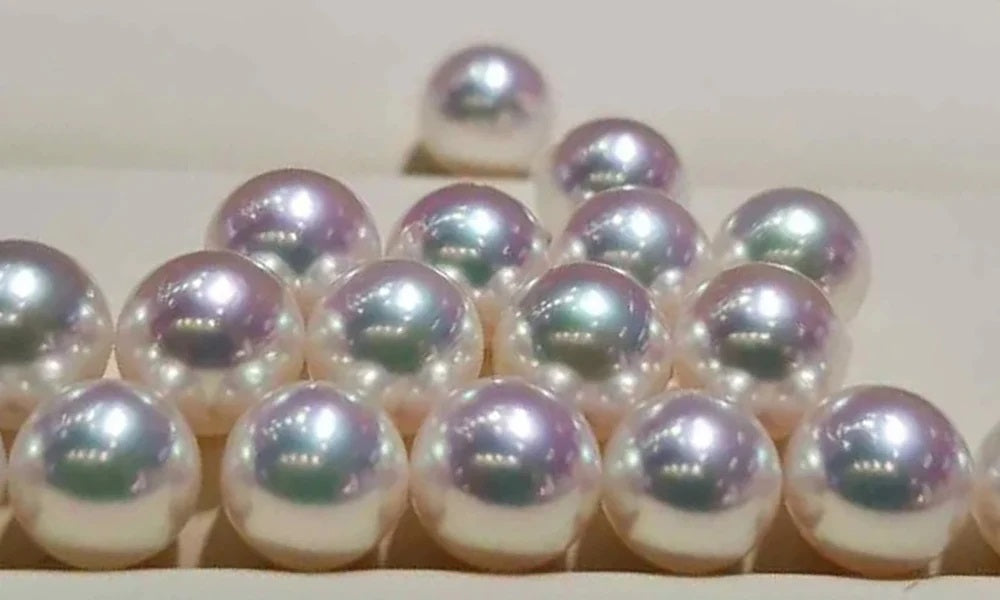The Evolving Shapes of Freshwater Pearls Part 1: Tissue-only Nucleated Pearls
There are two types of cultured freshwater pearls; those with solid nacre (tissue-only nucleated) which is the subject of this article, and those with a nacre covered nucleus (tissue accompanied by a mother of pearl bead) which we will cover in Part 2 of this article.Pearl Shapes
The round pearl stands as the apex of all pearl shapes, with the button, the drop, the off-round, keshi, and other baroque pearls also being popular shapes across both freshwater and saltwater pearls. In addition to all the above shapes, non-nucleated cultured freshwater pearls can come in the unique rice crispie shape and in stick shapes. The stick shapes include the subtypes of claw shapes and crosses. The history of cultured freshwater pearls reflects the stages in the path from the little odd crinkled rice shapes to perfectly round pearls.The First Chinese Cultured Freshwater
Solid nacre or tissue only nucleated pearls were the first kind of freshwater pearls the Chinese cultured. They came onto the jewelry markets in 1981. The first Chinese tissue nucleated freshwater pearls were dubbed “rice crispie” pearls because they looked like the cereal, full of little surface wrinkles. But they were highly iridescent and kept the iridescent look when dyed almost any color.Rice Crispie Pearls
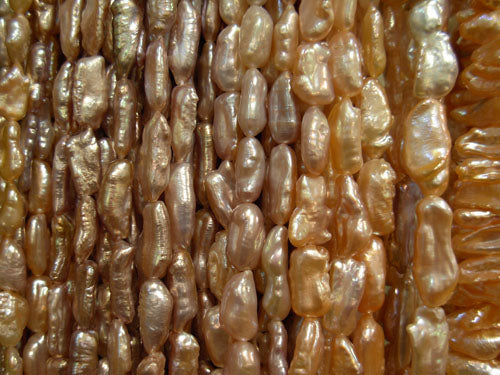
Modern "Rice Crispie" pearls by John Tu (via Pearl-Guide.com)
Potato Pearls
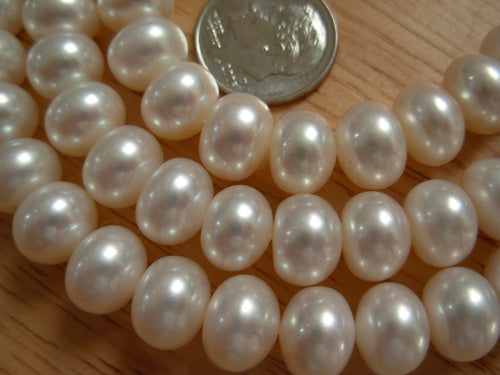
Freshwater potato shaped pearls from John Tu, as seen on the Pearl Guide Forums
Button Pearls
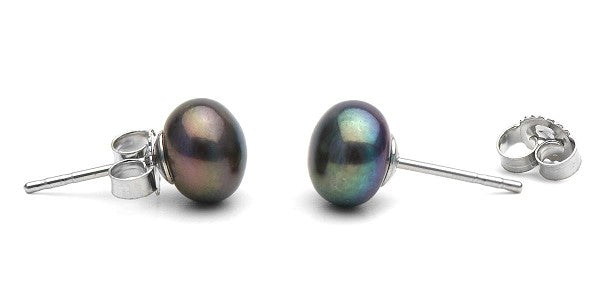
A pair for dyed black freshwater button pearl earrings from PearlsOfjoy.com
Round Freshwater Pearls
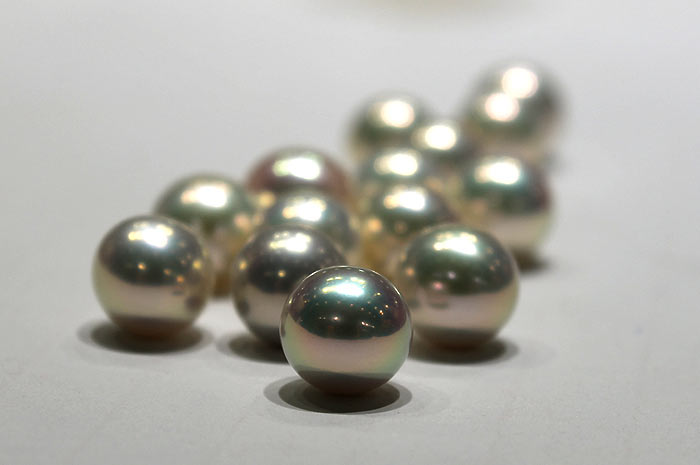
Round freshwater pearls that rival the finest saltwater pearls. Selected by Kevin Canning of PearlsOfJoy.com
Freshwater Stick Pearls
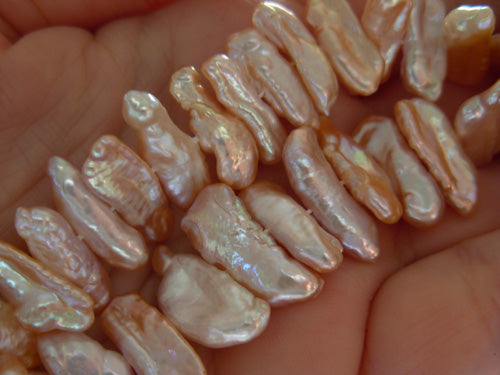
Freshwater stick pearls from John Tu, as seen on the Pearl Guide Forums
The Rise of Baroque Shapes
Baroque pearls have become more popular and as customers learn about them, the demand has increased to the point where the off-shaped pearls are now being offered by top online businesses. Some baroque shapes have their own names and are beginning to rise in popularity as people find they like the amazing iridescence of the baroque shapes. Rosebud pearls, keshi pearls and circled pearls, are just a few of the subtypes of baroque freshwater pearls on the market.In Part 2 we will follow the rise of nucleated pearls in China and the many new shapes this technique has introduced.






























